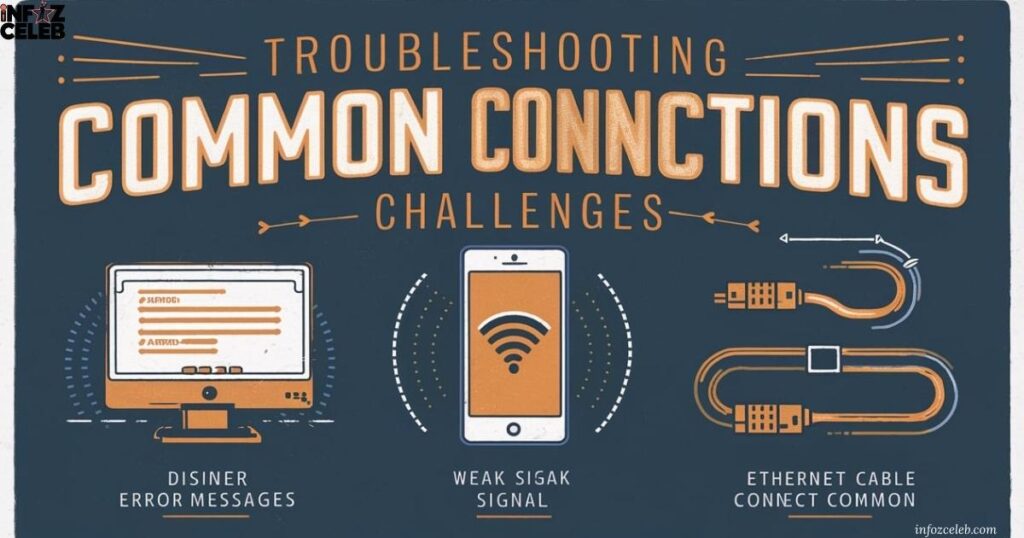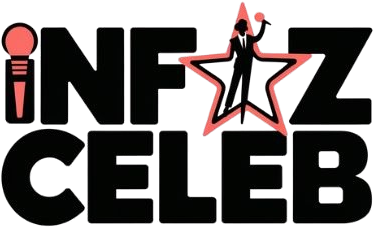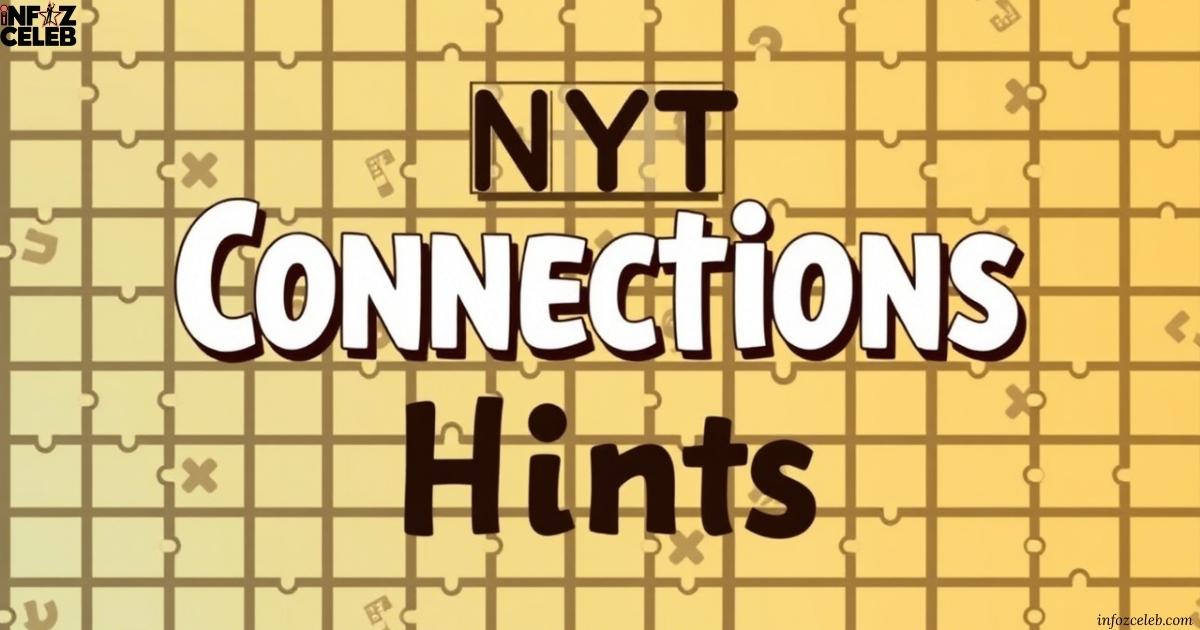NYT Connections Hints help players crack the daily 4×4 word grid in the New York Times puzzles. If you’re stuck or unsure about puzzle categories, these hints offer a gentle push. Whether it’s the Yellow group, Green group, Blue group, or Purple group, NYT Connections Hints guide you toward the right word connections. They’re perfect for fans using puzzle-solving strategies like lateral thinking, verbal reasoning, or pattern recognition.
Players use NYT Connections Hints to overcome vocabulary block, false patterns, and fixation block. They offer insight into puzzle difficulty levels, puzzle challenge trends, and help decode cultural references, homophones, puns, or thematic groupings. With real-time hints, puzzle walkthroughs, and hint progression, NYT Connections Hints give players the solving intuition needed to match words, spot patterns, and win. They’re a vital part of every puzzle-solving experience in the NYT puzzle community.
Introduction to NYT Connections
NYT Connections Hints is a daily word game from the New York Times puzzles collection that challenges players to group 16 words into four connected categories. Each category is color-coded by puzzle difficulty level: Yellow is easiest, followed by Green, Blue, and the tricky Purple group.
Created by Wyna Liu, this game has quickly become a favorite in the puzzle community, offering a fresh twist on classic word games.
What makes Connections different? NYT Connections Hints stands out by challenging players to categorize 16 words into four groups based on word associations and patterns, requiring lateral thinking. The game offers varying puzzle difficulty levels and a unique hint system to assist players.
- “Connections isn’t just about solving puzzles, it’s about connecting ideas and thinking creatively.” – Wyna Liu, Puzzle Creator
The game uses different colors to represent varying levels of puzzle difficulty, guiding players through easier to more complex word groupings.
| Color | Difficulty | Typical Relationship Type |
| Yellow | Easy | Simple word associations or common themes |
| Green | Moderate | Slightly more abstract connections or word patterns |
| Blue | Challenging | Requires lateral thinking and complex associations |
| Purple | Difficult | Complex and obscure connections, often involving puns or red herrings |
Decoding the Connections Puzzle Format
Before exploring how NYT Connections Hints works, let’s first get a clearer picture of its puzzle format.
Each puzzle is a 4×4 grid with 16 words scattered across it. The objective? Group these words into four categories of four words each. It sounds easy, but it’s a real mental challenge that requires deep thinking and problem-solving.
The color-coded system guides you through the puzzle’s difficulty:
- Yellow (beginner): Finding this group earns you 1 point.
- Green (intermediate): Worth 2 points.
- Blue (harder): Worth 3 points.
- Purple (expert): Worth 4 points.
Each day offers a new puzzle with a unique ID, which platforms like Mashable use to give tips.
Typical word connections you’ll encounter include:
- Similar meanings: Words related through their definitions or functions.
- Category clues: Words tied to specific themes or groups.
- Wordplay: Such as puns, homophones, or double meanings.
- Famous references: Linking words to movies, songs, or well-known quotes.
With only four wrong guesses allowed, the game encourages players to use tools like Mashable hints for extra support.
Mashable’s Approach to Connections Hints

Mashable’s hint system provides strategic guidance to players stuck in NYT Connections Hints. Instead of giving direct answers, Mashable offers clues that help players improve their puzzle-solving skills. Here are some revealing clues they offer:
- Word Associations: Look for words with similar meanings or functions.
- Thematic Groupings: Identify words tied to a specific theme or category.
- Linguistic Tricks: Watch for homophones, puns, or double meanings.
- Cultural References: Words related to movies, books, or famous figures.
- Prefix/Suffix Patterns: Words sharing common prefixes or suffixes.
- Word Length: Sometimes words of similar lengths form a group.
- Category Hints: Clues pointing out words belonging to specific categories.
- False Patterns: Be cautious of potential red herrings.
Mashable’s approach focuses on improving pattern recognition and critical thinking while guiding players to unlock solutions at their own pace.
Mashable’s hints are designed not only to help players solve puzzles but also to enhance their overall puzzle-solving skills. The goal is to encourage critical thinking, making every hint a learning opportunity. Here are some more insights from Mashable’s Games Editor:
- “Our hints are meant to guide players toward solutions, not just hand them the answers.” – Mashable’s Games Editor
By offering these thoughtful hints, Mashable creates a balance between challenge and support, making the NYT Connections experience more enjoyable and rewarding for players.
Breaking Down Mashable’s Hint Structure
Now, let’s examine how Mashable structures their NYT Connections Hints, ensuring both support and excitement.
Category-based NYT Connections Hints are a primary tool. Rather than just listing what words belong to a specific group, Mashable crafts hints that point toward the category in an engaging way. For instance, instead of saying “Famous authors,” they may offer, “These are literary figures known for their classic works.”
Pattern-focused hints dive deeper into the connections between words:
- “Things related to space exploration”
- “Words that include the letter ‘x’”
- “Common items found in a hospital”
These NYT Connections Hints encourage lateral thinking and challenge players to think outside the box.
Mashable also focuses on a user-friendly layout that makes their hints accessible:
- Key clues highlighted in bold
- Color-coded groups based on difficulty levels
- Collapsible sections to manage spoilers
These features enhance the user experience, especially for those navigating the hints on their mobile devices.
One standout aspect is Mashable’s hint progression system. As players continue to puzzle through, they can reveal hints at a gradual pace, helping to maintain momentum without feeling overwhelmed by spoilers.
Real Examples of Mashable Hints in Action
Here are some real-life examples of how Mashable structures its hints for different categories in NYT Connections Hints, helping players solve puzzles more effectively.
Yellow Category Example (Easiest)oo
Puzzle #101 Yellow Group
Words: DOG, CAT, HORSE, COW
Mashable’s Hint Progression:
- Category Hint: “These are common animals that can live on a farm”
- Word Pattern Hint: “These animals are all domesticated”
- Word Pattern Hint 2: “They are typically raised for farming purposes”
- Partial Answer: “DOG and CAT belong in this group”
In this Yellow Group, the hints guide players with straightforward clues, focusing on familiar, common farm animals. The simplicity of the pattern makes it accessible, and Mashable’s clear category hints make it easy for players to begin grouping.
Purple Category Example (Hardest)
Puzzle #205 Purple Group
Words: FLAMES, ASHES, SMOKE, FIRE
Mashable’s Hint Progression:
- Category Hint: “Look at the relationships between these words”
- Word Pattern Hint: “Consider the stages of combustion”
- Word Pattern Hint 2: “These all relate to the process of burning”
- Partial Answer: “FLAMES and FIRE belong in this group”
In the Purple Group, Mashable’s NYT Connections Hints get more specific and require a deeper understanding of a given concept. Players need to think about the different stages or processes related to burning, a more complex idea that requires lateral thinking.
Difficult Mixed Case
Puzzle #315 Mixed Group
Words: KITCHEN, BATHROOM, LIVING ROOM, BEDROOM
Mashable’s Hint Progression:
- Category Hint: “These are common rooms found in a house”
- Word Pattern Hint: “Think about spaces used for specific activities”
- Word Pattern Hint 2: “These are rooms that serve a particular purpose in a home”
- Partial Answer: “KITCHEN and BATHROOM belong in this group”
This Difficult Mixed Case illustrates how Mashable NYT Connections Hints uses a combination of thematic and structural hints. While the concept of rooms in a house is simple, the challenge lies in recognizing how each room serves a distinct purpose, pushing players to think critically about the specific functions of each space.
Read More: Cyril Shroff Net Worth: A Deep Dive into the Legal Mogul’s Wealth and Success
Advanced Techniques for Puzzle Solving

Advanced puzzle-solving techniques go beyond simple NYT Connections Hints and require a deeper understanding of the game’s structure. Top NYT Connections Hints players rely on strategies that streamline their process and reduce reliance on hints.
Recognizing Patterns is essential for solving faster:
- Word length patterns: Are the words all the same length?
- Part of speech patterns: Do they share a grammatical role?
- Prefix and suffix patterns: Do any words share similar beginnings or endings?
Word association techniques help uncover less obvious connections:
- Try forming sentences with each word in the same spot.
- Consider idioms or cultural references that link these words.
- Look for historical or situational contexts where these words often appear together.
Elimination techniques are key when dealing with tricky words:
- Begin by identifying the easiest category and eliminating those words.
- Focus on the remaining words and look for patterns among them.
- Keep eliminating until all categories are identified.
Handling red herrings is vital. Some words are intentionally misleading, and recognizing these false patterns can keep you on track.
- “Mastering these strategies gives you an edge in even the toughest puzzles.” – Expert NYT Connections Player
A great practice exercise is to revisit past puzzles, identifying all possible connections, not just the right ones. This will sharpen your skills and help you become a faster, more intuitive solver.
When and How to Use Mashable’s Hints Effectively
Here’s how you can enhance your puzzle-solving skills by strategically using Mashable’s hint system. By following these steps, you can maximize your chances of success and learn from each puzzle.
Start with this method for effective hint usage:
- Begin by attempting to solve the entire puzzle on your own without any hints.
- If you find yourself stuck after two wrong guesses, start with category hints to get a general idea.
- Once you’ve explored category hints, proceed to word pattern hints to identify linguistic or structural clues.
- If you’re still struggling, use partial answers to gain a bit more guidance while maintaining the challenge.
- Finally, only turn to the complete answers when you’ve tried everything else and need a solution.
Knowing when to seek help is just as important as using NYT Connections Hints effectively:
- Mental roadblock: When you can’t break free from a pattern that’s clearly wrong.
- Vocabulary confusion: When words seem unfamiliar or too complex for the context.
- Conceptual misunderstanding: When the category’s theme or idea feels unclear.
To make the most of your puzzle-solving journey:
- Track the categories or types of puzzles you tend to get stuck on.
- Pay attention to common patterns or themes that appear in Mashable’s hints.
- Replay puzzles after using hints to see where you went wrong, and learn from it.
- Consider using a “hint-free” challenge approach and save hints for particularly difficult days.
Following these techniques helps sharpen your puzzle-solving intuition while reducing frustration, making puzzle-solving an enjoyable challenge.
Mashable’s Hint Community and Resources
Mashable has cultivated a thriving community around their NYT Connections hints, creating an engaging environment for puzzle enthusiasts. The experience extends far beyond simply providing hints.
Discussion platforms like forums and comment sections under hint articles allow for:
- Exchanging solving techniques and strategies
- Exploring creative connections and solutions
- Supporting other players while maintaining the challenge of the game
Social media sharing is seamlessly integrated into the community, connecting players through platforms such as:
- Twitter (#NYTConnections)
- Reddit (r/NYTConnections)
- Facebook (NYT Connections Fan groups)
This social dimension enhances the individual puzzle-solving experience by making it collaborative.
A user-driven contribution system enables community members to:
- Offer fresh connection ideas
- Highlight tough or tricky word groupings
- Share insights on solving times and techniques
Mashable’s historical hint archive becomes a valuable resource for:
- New players honing their skills
- Experienced solvers revisiting old puzzles for practice
- Puzzle designers studying patterns and strategies
“Mashable’s comment section has helped me refine my puzzle-solving skills far more than any single hint.” – Regular Mashable Reader
Additionally, Mashable offers helpful companion resources like:
- “Connections Concepts”: A glossary of key puzzle categories
- “Pattern Library”: A collection of common word relationships
- “Difficulty Tracker”: A calendar to monitor trends in puzzle difficulty
This comprehensive ecosystem cements Mashable’s role as a key resource for anyone looking to improve their Connections puzzle-solving abilities.
Comparative Analysis with Other Hint Sources
Mashable’s NYT Connections hints system stands out not just for its quality, but for its unique approach. To fully appreciate its value, let’s compare it with other popular hint sources.
Other hint websites often provide direct answers or generalized tips that may not be as specific or helpful. These platforms typically focus on:
- Giving complete or partial answers
- Offering generic clues that don’t cater to the game’s depth
- Providing hints without understanding player skill levels
Mashable, however, takes a more structured and player-friendly approach by offering:
- Categorized hints to guide the thought process
- Word pattern hints that deepen understanding of language and structure
- A progressive hint system that avoids overwhelming players with information
While social media groups and user forums on platforms like Reddit or Facebook offer diverse perspectives, Mashable’s structured hint progression is better suited for players seeking gradual assistance.
“Mashable’s approach allows me to solve puzzles on my own terms while learning more with each hint.” – Regular NYT Connections Player
In addition to NYT Connections Hints, Mashable offers tools like:
- “Puzzle Walkthroughs”: Step-by-step breakdowns for challenging puzzles
- “Strategy Guides”: Tips for mastering different difficulty levels
- “Community Collaboration”: Discussions that spark new solving techniques
By offering a balanced approach to hints, Mashable provides a comprehensive learning experience, setting it apart from other sources.
Here’s a table comparing how independent puzzle sites approach hints:
| Site | Hint Style | Publication Speed | Community Features |
| Mashable | Progressive, categorized hints with a focus on word patterns and linguistic tricks | Daily, with hints released gradually | Active forums, social media integration, comment sections for strategy sharing |
| Puzzle Insider | Direct answers with minimal guidance, focuses on speed | Weekly, with hints released in bulk | Limited community engagement, mostly feedback-based |
| Puzzle Solvers | Generalized clues that are broad and less specific | On-demand, with hints released as needed | Strong social media presence for discussions and live chats |
| Word Puzzle Hub | Simple category hints and minimal word pattern recognition | Bi-weekly updates based on user requests | Forums for users to collaborate on solutions, user-submitted hints |
| The Puzzle Lab | Analytical hints that encourage logical reasoning | Regular updates (several times a week) | Community-driven, with in-depth analysis and tip-sharing from users |
Tips from Connections Masters
Here are some valuable tips from experienced NYT Connections Hints players:
- Practice Pattern Recognition: One of the most crucial skills in solving Connections puzzles is identifying recurring patterns. Look for word similarities, such as shared prefixes, suffixes, or themes. Recognizing these can help you quickly group words into categories.
- Start with Easy Categories: If you’re stuck, try identifying the simplest group first. This clears up some of the words, making it easier to focus on the remaining ones.
- Use the Process of Elimination: If you can’t see the obvious connections right away, start eliminating words that don’t fit. This reduces your options and helps you focus on the words that do belong together.
- Think Outside the Box: Don’t be afraid to think laterally. Sometimes, the connections are based on word meanings, phonetics, or cultural references. Keep an open mind and look beyond literal meanings.
- Don’t Rush: Many puzzle masters recommend taking your time. If you’re unsure, step away and come back with a fresh perspective. Taking breaks can help reset your thought process and lead to better connections.
- Leverage Mashable’s Hints Wisely: Use hints strategically rather than relying on them too early. Try the puzzle on your own first, then move on to the category hints if you’re stuck. Save the word pattern hints for when you’re really unsure.
- Study Past Puzzles: Going through older puzzles can help you spot common themes and tricks. Over time, you’ll start recognizing the types of connections frequently used in the game.
- Join the Puzzle Community: Engaging with other players in forums or social media groups can provide insights and strategies. Sharing experiences and learning from others can significantly boost your puzzle-solving abilities.
By applying these techniques, you can sharpen your puzzle-solving skills and become a master of NYT Connections Hints.
Troubleshooting Common Connections Challenges

Even with Mashable’s NYT Connections Hints, certain puzzle challenges can still cause frustration. Here’s how you can overcome them effectively.
Handling split categories and deceptive patterns:
- Split category example: Words about animals scattered across different groups.
- Deceptive pattern example: Words that have similar sounds but belong to separate groups.
Strategy: Before finalizing any group, ensure that each word clearly fits within the category you’re considering.
Maximizing your attempts:
- Don’t waste attempts on a group you’re unsure about.
- Make sure each group has exactly four words.
- If you’re nearing the end, use the process of elimination to finalize your choices.
Overcoming common obstacles:
- Words with dual meanings: Some words, like “match” or “bat,” can be tricky.
- Overlapping categories: Certain words might seem to belong to more than one category.
- Knowledge gaps: You might come across references that are outside your knowledge or experience.
When to use hints vs. when to start over:
| Situation | Recommended Action |
| First attempt fails | Keep going without hints |
| Second attempt fails | Look at Mashable’s category clues |
| Third attempt fails | Turn to word pattern hints |
| About to run out of attempts | Use partial answers if needed |
Special challenge: Some puzzles intentionally mislead with tricky words. Mashable often provides “clarification hints” to help with these tricky terms.
- “Hard puzzles are designed to lead you toward false categories to test your skills.” – Puzzle Expert
If you’re truly stuck, take a break. A fresh perspective can often reveal new connections you missed earlier.
FAQ’s
How many mistakes are allowed in Connections?
In Connections, you are allowed up to three mistakes. Keep an eye on the hints to avoid errors and improve with the NYT Connections Hints.
What is the hardest color in Connections?
The hardest color can vary depending on the player’s experience. The blue group often presents a bigger challenge, but NYT Connections Hints can help guide you.
Can you play Connections more than once a day?
Yes, you can play Connections multiple times a day. Each new puzzle gives you a fresh challenge, and using the NYT Connections Hints can improve your strategy.
How do NYT Connections work?
NYT Connections involves grouping words based on their relationship. The challenge lies in finding the hidden connections, and the NYT Connections Hints are a great guide.
Can I play NYT Connections for free?
Yes, you can play NYT Connections for free. However, premium features like extra hints may require a subscription, enhancing the experience with the NYT Connections Hints.
Conclusion
NYT Connections Hints are the perfect puzzle-solving companion for anyone tackling the daily 4×4 word grid. They help you break through mental gymnastics, recognize word patterns, and explore puzzle difficulty levels. Whether you’re sorting the Yellow group, Green group, Blue group, or Purple group, NYT Connections Hints offer puzzle-solving strategies like lateral thinking, verbal reasoning, and cognitive strategy. They guide players through red herrings, false patterns, and even provide visual puzzle hints.
Players use NYT Connections Hints across puzzle forums, puzzle collaboration platforms, and comment sections to compare ideas and master word relationships. They boost your puzzle-solving skills and sharpen your puzzle challenge mindset. With insights from Mashable’s Games Editor, the hint system supports daily puzzle success. Whether it’s puzzle reset or exploring the puzzle archive, NYT Connections Hints improve your puzzle experience and help you reach true puzzle mastery.
Welcome to Infoz Celeb! I’m Fredaston , Owner, Admin and Author of this Website.

